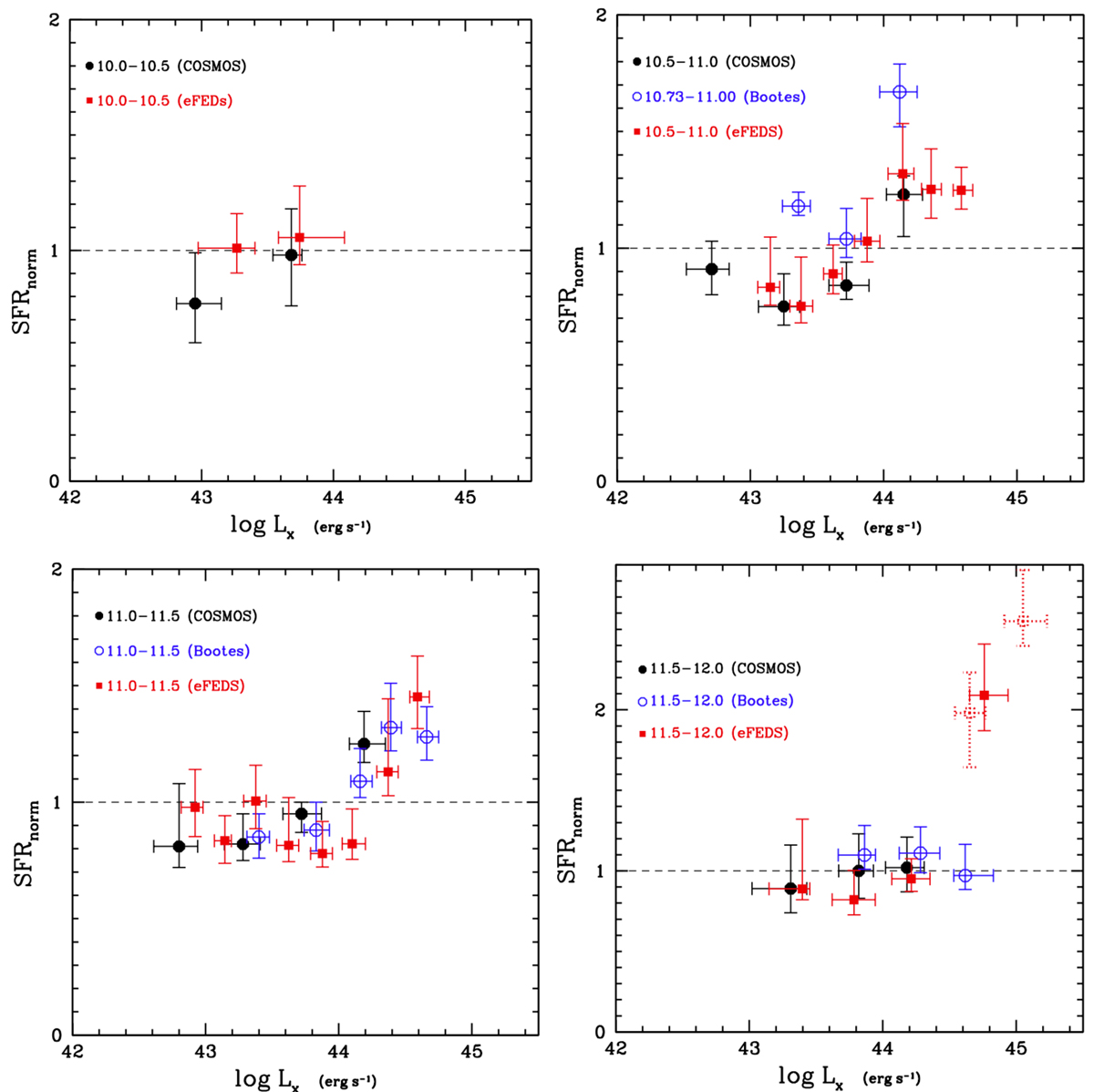Fig. 5.

Download original image
SFRnorm vs. X-ray luminosity for four stellar-mass bins. We complement our results in the eFEDS field (red squares) with those using the COSMOS dataset (Mountrichas et al. 2022) and those from the Boötes sample (Mountrichas et al. 2021c). The dashed horizontal line indicates the SFRnorm value (=1) for which the SFR of AGN is equal to the SFR of star-forming galaxies. Errors are calculated using bootstrap resampling. In some cases, the error bars associated to the COSMOS dataset are smaller than those associated to eFEDS. This is due to the finer binning grid used for the eFEDS sample. At low luminosities (LX, 2−10 keV < 1044 erg s−1), the results from the three studies are in very good agreement. At high luminosities (LX, 2−10 keV > 1044 erg s−1), our measurements from the eFEDS field confirm the tentative results from the Boötes field, which suggest that AGN host-galaxies with 10.5 < log [M*(M⊙)] < 11.5 present an approximately 30% higher SFR than star-forming galaxies. In the most massive systems, log [M*(M⊙)] > 11.5, our calculations indicate that, in the most luminous systems (LX, 2−10 keV ∼ 1045 erg s−1), the SFR of AGN hosts could be enhanced compared to that of MS galaxies. The two dotted points show the results when we split the highest LX bin from the eFEDs field into two using an LX cut at LX, 2−10 keV = 1044.8 erg s−1.
Current usage metrics show cumulative count of Article Views (full-text article views including HTML views, PDF and ePub downloads, according to the available data) and Abstracts Views on Vision4Press platform.
Data correspond to usage on the plateform after 2015. The current usage metrics is available 48-96 hours after online publication and is updated daily on week days.
Initial download of the metrics may take a while.


